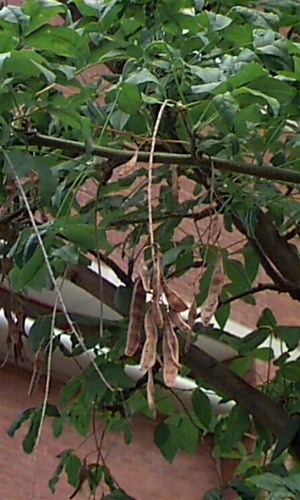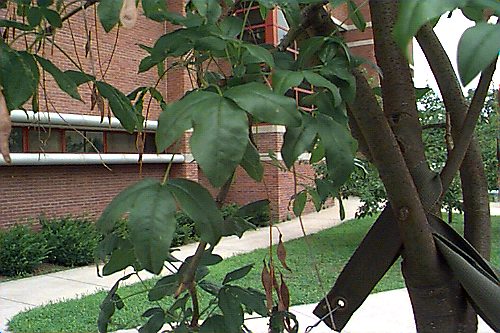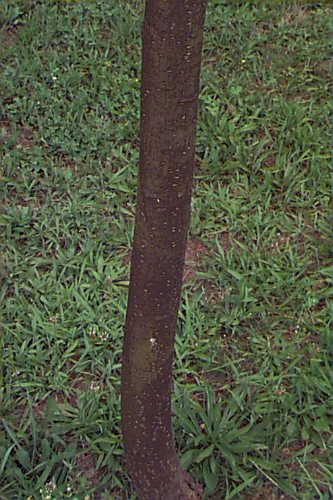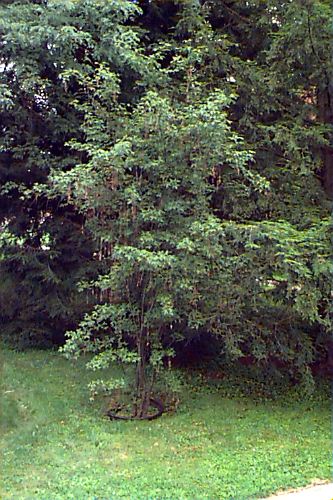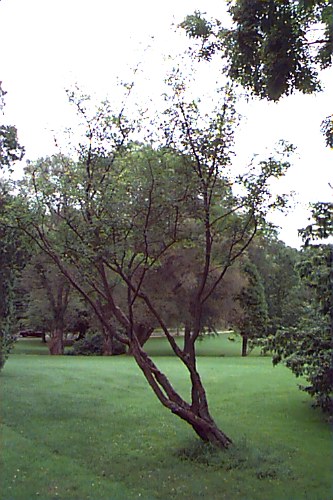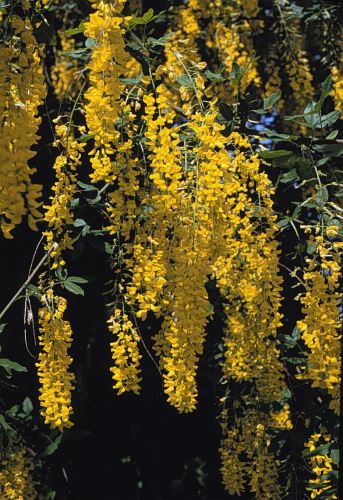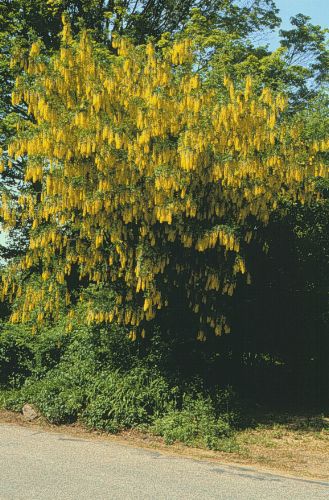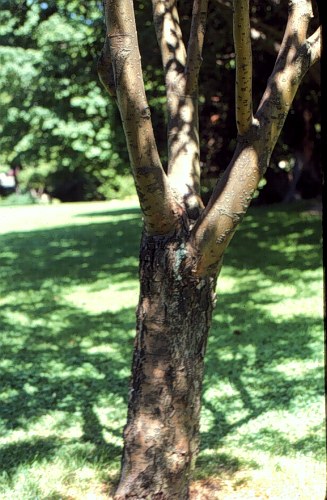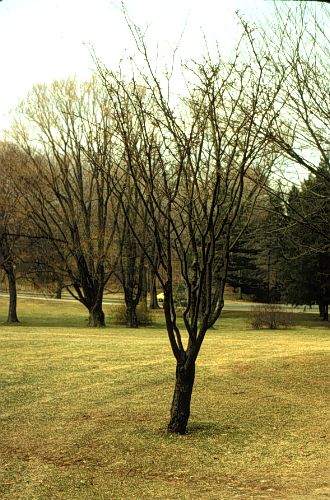Laburnum x watereri
Waterer Laburnum, Goldenchain Tree
Leguminosae
ExpandHabitat
- a hybrid between L. alpinum and L. anagyroides
- hardy to zone 5
- dislikes zones warmer than 7
Habit and Form
- a small, deciduous tree
- 12' to 15' tall
- two thirds as wide as tall
- obovate shape
- upright narrow to upright spreading habit
- tends to be sparse and underfoliated at the base; most leaves in the upper two thirds of the tree
Summer Foliage
- alternate trifoliate leaves
- each leaflets is elliptical with all three leaflets of about equal size
- leaves are 1.25' to 3' long
- emerging leaves have a silky pubescence
- mature leaves are glabrous and bright green to blue-green in color
Autumn Foliage
- yellow-green
- unimpressive
Flowers
- very showy pendulous clusters that can be 10" to 20" long
- color is yellow
- individual flowers are pealike and about 1" long
- bloom time is mid to late May
- during the week or 10 days this plant is in bloom, nothing compares
Fruit
- a small flattened pod
- changes from green to brown in October
- somewhat persistent
- not ornamentally attractive
Bark
- stems are shiny, olive green
- even older branches remain smooth and olive green
- eventually the main trunk's bark develops some roughness and fissuring
Culture
- likes a moist, fertile, cool, well-drained soil
- not a plant for hot dry sites
- the ideal location is sunny, but with protection (shade) during hottest part of the day
- tolerant of high pH soils
- prune after flowering
Landscape Use
- specimen
- in small groupings
- for spectacular flowering display
- works particularly well in protected corners of buildings and walls
- patio tree
Liabilities
- a short-lived tree under most situations
- sunscald on bark
- twig kill in severe winters
- canker disease and twig blight
- can be leggy at the base
- seeds are poisoned
- need for protected, specific site requirements
ID Features
- small, obovate-shaped tree
- yellow flowers in pendulous clusters
- blue-green leaves
- olive green bark
- leggy at base of the plant
- persistent pods possible
Propagation
- leaf bud or root cuttings
- by seed
Cultivars/Varieties
'Alford's Weeping' and 'Pendulum' - These are weeping forms with distinctly pendulous branches. They appear to flower sparsely.
'Aureum' - This is a rare form with golden yellow leaves, though the color probably would not persist well into the season in warm summer climates.
'Vossii' (also listed as L. x vossii) - The most commonly available form, this cultivar features a denser habit and longer flower racemes -- to 2' long.
